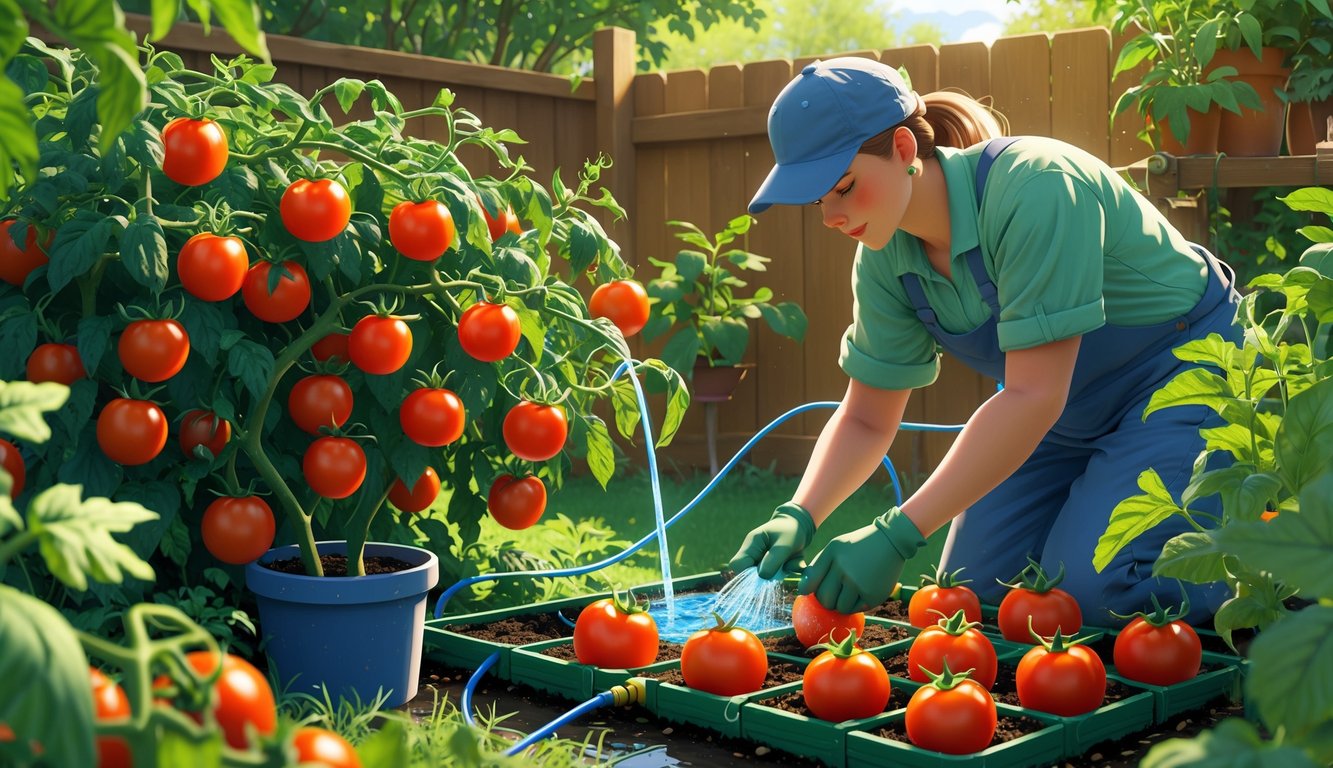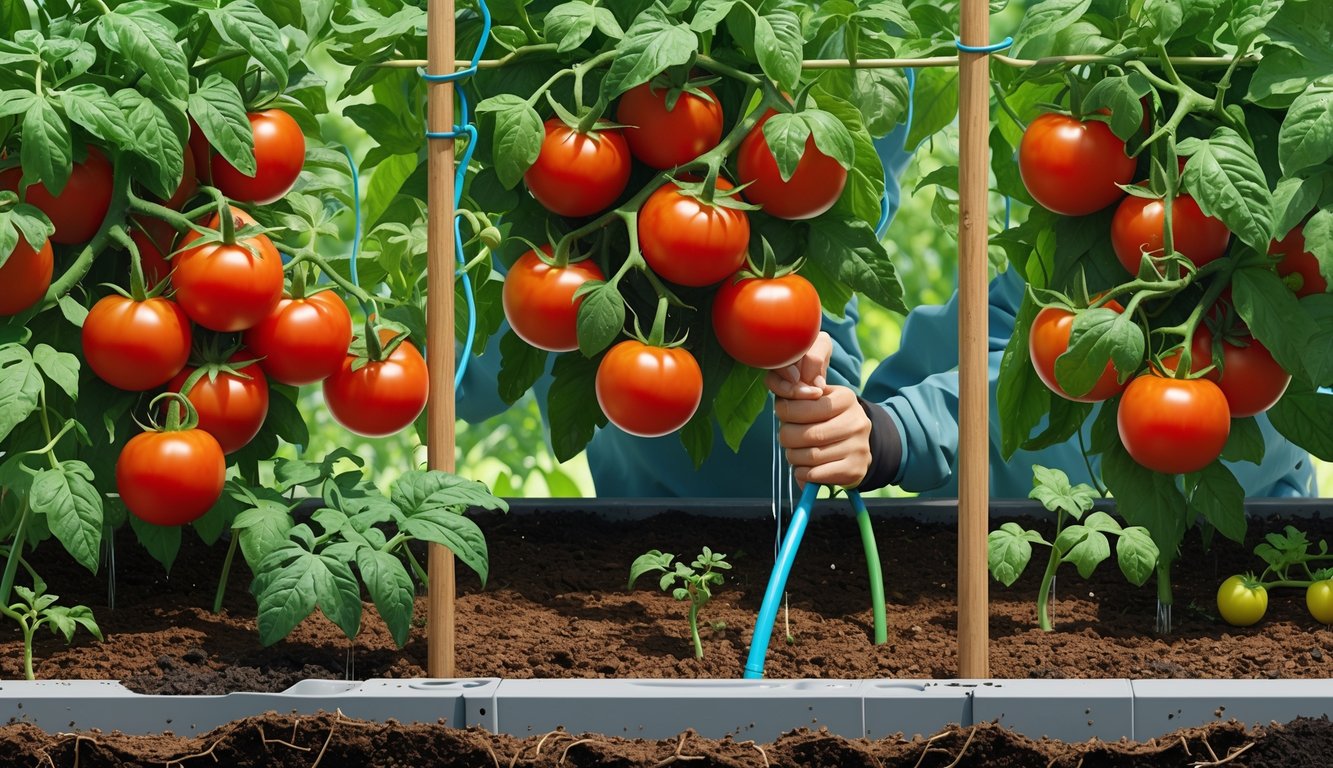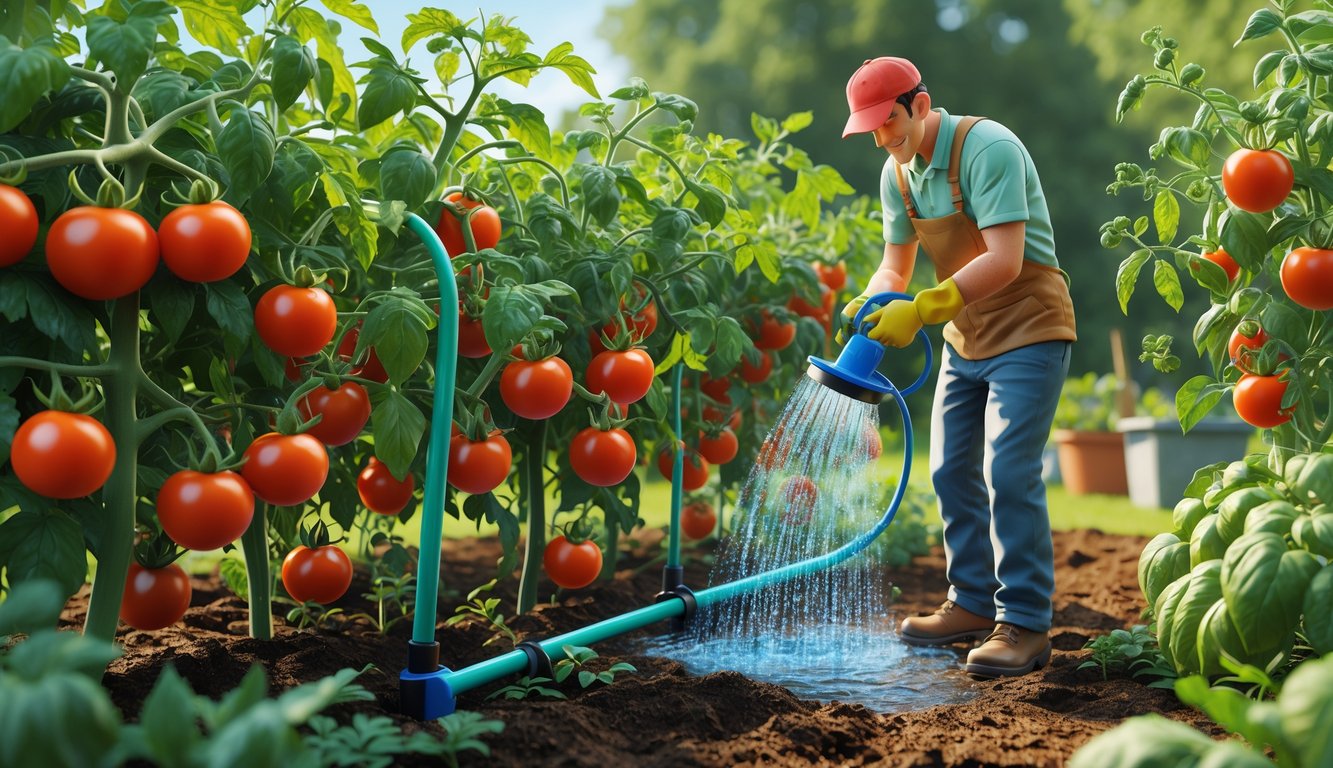
Enhancing Moisture Retention and Soil Health
Chasing higher yields? Welcome to chaos. My grandma used to shove old newspapers under her tomato plants—maybe she was onto something. Mulching is everywhere online, but then I caught my neighbor mulching his driveway. Why? No clue. Soil moisture is slippery. My tomatoes wilt, neighbor’s thrive, and I’m left staring at the sky.
Utilizing Mulching for Tomatoes
Bark mulch smells like wet socks. No one warns you. Last June, I dumped straw on my sticky clay soil. Wasn’t magic, but I did see a water bill drop—about 35% less, according to some Yale agronomist I interviewed (he hates pine needles, which, okay). Tomatoes just want cool roots and less evaporation. Worms love mulch. So do chipmunks.
I keep a chart above my potting bench: straw, shredded leaves, compost = best for moisture. Plastic weed mats? Meh, my plants always look depressed. Garden science says mulch does more than save water—it slowly feeds the soil too.
Chipmunks dig holes everywhere, especially under mulch. I just shove it back around the stems every couple weeks, trying not to smother them. Sometimes I forget. Still better than bare dirt.
Maintaining Soil Moisture Levels
Watering schedules are, honestly, fiction. Two storms in a row, and somehow my raised beds are still dry. Deep watering every five to seven days? Magic. Roots go deeper, fruit gets better. I started watering deeply and using mulch, and my yield jumped. Yes, I graph my tomatoes. Don’t judge.
Here’s what nobody tells you: toss in some compost every month. Instantly better. My sand-heavy soil held water 21% longer after I started doing this (checked with a digital meter, because why not). Moisture meters are cool, but honestly, just grab a handful—if it sticks and smells earthy, you’re good. If it crumbles, water.
Drip irrigation? Love-hate relationship. Perfect when it works, but one clogged filter and you’re underwater. Still, research says drip plus mulch means less panic-watering. Soil stays loose. Plants don’t care about heatwaves. Chipmunks, though? Always a problem.
Avoiding Watering Pitfalls and Common Mistakes

Tomatoes are picky. Water wrong and you get split fruit, black spots, sad yields. I used to think more water would fix wilted leaves. Nope. Made it worse.
Signs of Overwatering and Underwatering
Overwatering is sneaky. Soil looks dry, but roots are drowning. Missouri Botanical Garden says too much water suffocates roots—plants wilt, leaves yellow, stems go mushy. Fungus gnats? Moss on the soil? Time to back off.
Underwatering? That’s me, every July. Leaves curl, feel crispy, and sometimes one watering isn’t enough. Raised beds dry out fast—if soil is dry to the knuckle, water. Forget the sensors. Container plants? Nightmare in heat.
“One inch per week” is the classic advice (see here), but I always forget to count rain.
Preventing Blossom End Rot and Cracking
Blossom end rot is a slap in the face. Fruit looks perfect, then rots underneath. Not a calcium shortage—just uneven watering messing with calcium absorption. University folks swear by consistency. I use soaker hoses and mulch and try not to skip days.
Cracking? Same deal. Water after a dry spell and tomatoes split. Drives me nuts. The fruit swells faster than the skin can handle. Deep, steady watering helps. Epic Gardening says sudden rain plus neglect equals ugly fruit.
There’s always one tomato that splits no matter what. I switched to crack-resistant types, but basics matter more.
Supporting Healthy Tomato Growth and Yield

I’ve lost count of how many times I thought a new compost tea would save my tomatoes, only to wake up to yellow leaves. You want yield, not disappointment, right?
Addressing Yellowing and Wilting Leaves
Yellow leaves. Why? Sometimes I think tomatoes are just dramatic. I changed my watering schedule because some guy online said it’d boost yield—got yellow leaves everywhere. People blame everything: overwatering, not enough nitrogen, root rot, magnesium, who knows? Extension agents say uneven watering robs fruit of calcium, causing rot and yellowing. Sometimes I think it’s just bad luck.
Morning deep watering helps. Old Farmer’s Almanac says so, and I believe it—my leaves look better when I do. Wilted leaves bounce back by evening half the time, so I get lazy. If the stem feels soft, though, forget it—compost pile time. Don’t let soil stay soggy unless you want to study root disease. I sure don’t.
Ensuring Proper Nutrient Uptake
It’s a juggling act—nitrogen for green leaves, magnesium for color, calcium for rot prevention. If you’ve never run out for Epsom salts in July, you’re lucky. I’ve had better luck with liquid feeds that have magnesium than with generic stuff. Growers say sulfur matters for flowers and fruit, but who actually tests their soil?
People swear by compost tea, but I’m not convinced it fixes everything. Rotating between calcium spray, slow-release fertilizer, and foliar magnesium got my ‘Better Boys’ green again after a rough June. Squirrels still bite the ripe ones in half. They don’t care about nutrients.